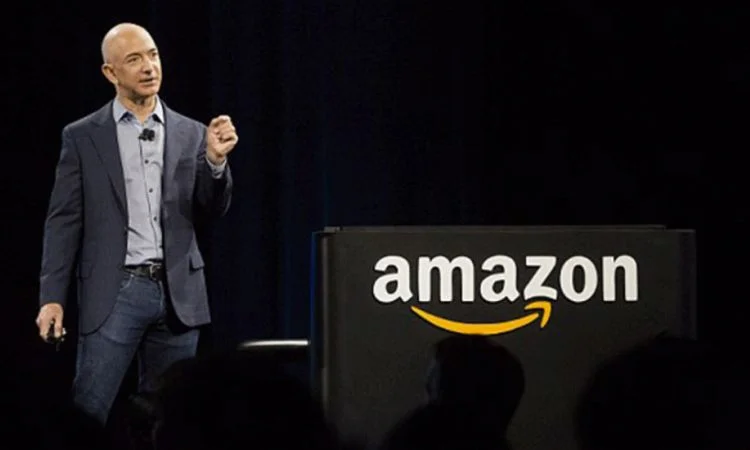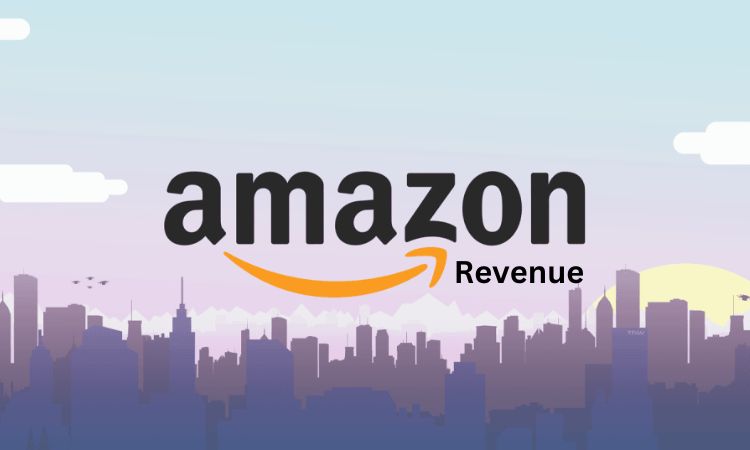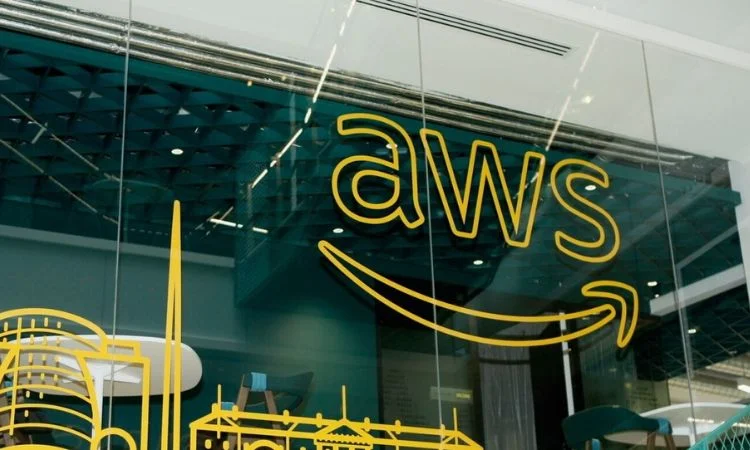Books, CDs, electronics, groceries, sporting goods, and more—Amazon is a success story that promotes its status as the world’s largest e-commerce leader.
Since going online in 1995, Amazon has done more for its consumers than just deliver their orders on time. It has increased customer loyalty, added new features to its website and mobile app, improved its selection of goods, and lowered its costs when compared to competing e-commerce sites.

Source: Repricer Express
These days, it’s synonymous with internet buying. It wasn’t always this way, though. Because of Jeff Bezos’ vision and drive, you may have products delivered directly to your door today. Let’s examine his journey of becoming the most well-known online retailer in more detail.
Jeff Bezos’ Background and Early Career

Source: Tvisha Technologies
Jeff Bezos’ was born in Mexico on January 12, 1964. His parents are Jacklyn and Ted Jorgensen. Back when Bezos was a student, Jacklyn would take her to evening classes. His father, Ted, owned a city bike shop and was nineteen years old. Due to financial difficulties, Ted developed an alcohol problem, so Jacklyn moved in with her parents and left her husband. She filed for divorce in June 1965, when Jeff was 17 months old. Eventually, Jacklyn married Miguel “Mike” Bezos in 1968. Mike adopted Jeff and gave him the Bezos moniker.
Science was Jeff Bezos‘s thing. He began to utilize a computer at school, something his friends were not familiar with. He succeeded academically and was recognized with multiple awards in school.
His school graduation speech appeared in the local papers. Later on, he went to college to major in engineering. He gained knowledge of technology, banking, and investing between 1986 and 1994 while employed by many firms, including IBM, Andersen Consulting, and Bankers Trust.
Amazon Success – Name and Logo
The corporation was named “Amazon” because Jeff Bezos wanted it to be the biggest, even though Amazon is the largest river in the world. The arrow pointing from A to Z in Amazon’s current logo, which it has been using since 2000, represents the company’s mission to offer every product a client might require. A smile is formed by the arrow, signifying client satisfaction.
Amazon – Revenue

Source: Channel News
The revenue from operations of Amazon Seller Services, which operates the Amazon India marketplace, has increased by 49%. This revenue was recently recorded at Rs 10,847.6 crore, up from Rs 16,200 crore in FY21. The massive Indian e-commerce company saw a drop in losses as well, going from Rs 5849 crore to Rs 4748 crore. But Amazon Wholesale (India), a different division of the company, has reduced operations during FY21, reporting a 7% decline in operating revenue from Rs 3384 crore (FY20) to Rs 3131 crore (FY21).
Initial Days of Amazon In a Garage
The story of Jeff Bezos and Amazon’s success started in 1994 with the launch of amazon.com. He was an executive at a Wall Street hedge fund before that. In Bellevue, Washington, he converted his garage into Amazon’s first office. He began working on the site’s software with several other team members. In 1995, they then established the website.
The goal was to provide any reader, anywhere, with any book. After doing extensive research, Bezos concluded that books would be the greatest product to offer online at first because they would be easy to ship and would result in high ticket purchases.
There were other players in the market besides Amazon. Long before Bezos, in 1991, Computer Literacy, a Silicon Valley bookstore, started offering books from its inventory to its tech-friendly customers.
The Race to Becoming The World’s Largest
From a garage to a two-room office, the website was located. By 2001, despite working around the clock for six years, Amazon was still losing money. A lot of people began to view it as a failure. But Bezos stuck to his guns and told the doubters to shut up since they were blind to the Internet’s massive potential for growth.
For a business that is expanding quickly, profit in its early years is essentially worthless. He even offered each of his staff members a t-shirt that said, “Get Big Fast.” Revenues increased significantly and fresh clients started coming in.
On May 15, 1997, the firm went public, with a market value of about $438 million and shares priced at $18 a share.
What After Books?
Amazon began selling music and films in 1998, the same year it began operating internationally. During this period, they were also purchasing tiny international internet bookshops located in Germany and the UK.
The product line was extended in 1999 to include toys, games, software, home improvement supplies, video games, and consumer electronics, among many other things. Amazon evolved into a multipurpose internet retailer.
Hitting Milestones in Amazon Success Story
1995: The launch of amazon.com.
1999: The rise of Amazon to become the global leader in online retail.
2005: Prime Membership was launched
2007: The launch of the Kindle, Amazon’s first consumer product.
2017: It was reported that Amazon purchased the supermarket store Whole Foods Market, Inc.
2018: Amazon surpasses all other US booksellers in sales.
2018: Amazon rises to the third place in the US rankings for selling smart gadgets.
Expansion and Acquisition
It would not have been feasible for Amazon to grow so rapidly without simultaneously purchasing smaller rivals. It presently provides services in the domains of cloud computing, technology devices, and entertainment.
Amazon Web Services (AWS)

Source: Amazon Europe
Amazon discovered in the late 2000s that other small businesses that wished to sell online but could not afford to dive into the complexities of the internet and data might make use of the computing technologies it was deploying. To do it, Amazon has the most robust systems. As a result, they launched Amazon Web Services, a web service (AWS). Apple opened the app store shortly after and encouraged developers to publish their apps there. Most of the apps in the app store, such as Tinder and Candy Crush were operating through AWS.
Although strong competition from industry titans like Google and Microsoft, Amazon is currently the global leader in computer services. They’re enabling developers to enhance machine learning or Alexa features. Nearly all companies have a high demand for AWS developers.
| Year | Revenue |
| 2014 | 88.79 B |
| 2015 | 107.01 B |
| 2016 | 135.99 B |
| 2017 | 177.87 B |
| 2018 | 232.89 B |
| 2019 | 280.52 B |
| 2020 | 386.06 B |
| 2021 | 469.82 B |
| 2022 | 513.98 B |
| 2023 | 574.79 B |
Strategies That Led Amazon to Build a Trillion-Dollar E-commerce Empire
1. Focus on Putting Customers’ Service First:
When it comes to buying, Amazon has distinguished itself as the go-to online retailer thanks to its excellent customer service. Featuring affordable, premium goods, safe, and easy ways to make payments, as well as the ability to replace lost or damaged items if necessary, all at a reasonable price.
2. Availability of a Wide Range of Products
Amazon offers a vast array of things for sale. You may easily locate something that suits your needs because they have categories for everything from gadgets to clothes. You can purchase from a third-party merchant on their website or view their selection at Amazon.com.
3. Cutting-edge Technology
Amazon utilizes current technology in its business model and has a thorough understanding of it. For instance, the Amazon Echo, a new product from Amazon, is a voice-activated gadget that lets you do a lot of things, like control your TV, play music, listen to podcasts, and get the news and traffic reports!
4. Top-notch Customer Support System
At Amazon, contacting customer support is simple. You can select the category that best fits your inquiry from a variety of options on their Customer Service page. Your Order, Returns & Refunds, Manage Prime, Digital Service & Device Support, Payment Options, Your Accounts, and Safe Online Shopping are a few of these.

Source: Industry Leader Magazine
5. Promise to Deliver Goods Quickly
The consistency and reliability of Amazon’s shipping pace are dependent upon the customer’s geographic region. Two-day delivery extensions are available to Prime members who pay a little bit extra each month; some orders even arrive on the same day.
6. Innovative Sales Strategies
With Amazon.com, its online marketplace, the company has enjoyed great success. They launched several additional stores in real places, including Kohl’s, after realizing there was an opportunity to grow their business beyond their website. This made it easier for customers who preferred to purchase offline.
On its website, Amazon provides discounts in several categories, yet in certain areas, the Fashion category is not one of them.
7. Product Pricing & Available Discounts
Under the following categories—Today’s Deals, Watched Deals, Outlet Deals, Warehouse Deals, Lightning Deals, Coupons, eBook Deals, Subscribe & Save—they often launch discount programs.
8. Service to Every Door-step Worldwide
The most popular nations, including the US, Canada, Australia, Brazil, China, France, Germany, India, Italy, Japan, and Mexico, all have websites for Amazon. Worldwide, Amazon also offers sites customized to specific countries. There are locations for the company in over 100 countries.
9. Assurance to Protecting Consumer Safety
Amazon and its affiliate network have extremely thorough security protocols in place to guarantee the security of client data. Amazon has a system in place for reviewers to report fraud or poor service if they want to, and they never give out any personal or financial information to third parties.
10. Talented UX Team
An entire group of experts referred to as Amazon’s UX team, is employed by the company to examine customers’ search patterns and provide just those products that each consumer is most likely to find interesting.
Customers’ experience is made more personalized as a result, increasing the possibility that they will purchase Amazon.com.
Conclusion
The giant of e-commerce Amazon Success, which has a strong “win it” mentality and is always accepting of new ideas, attributes its success to its devoted client base as well as its commitment to continuous innovation and experimentation. The Amazon Success Story is all about how the online retailer can stay in touch with its clients and introduce goods that are customized to their wants.
When it comes to reputation, no other B2C corporation even comes close to matching Amazon’s. Other companies aspire to be like Amazon but to match its heights, other companies require assistance.















